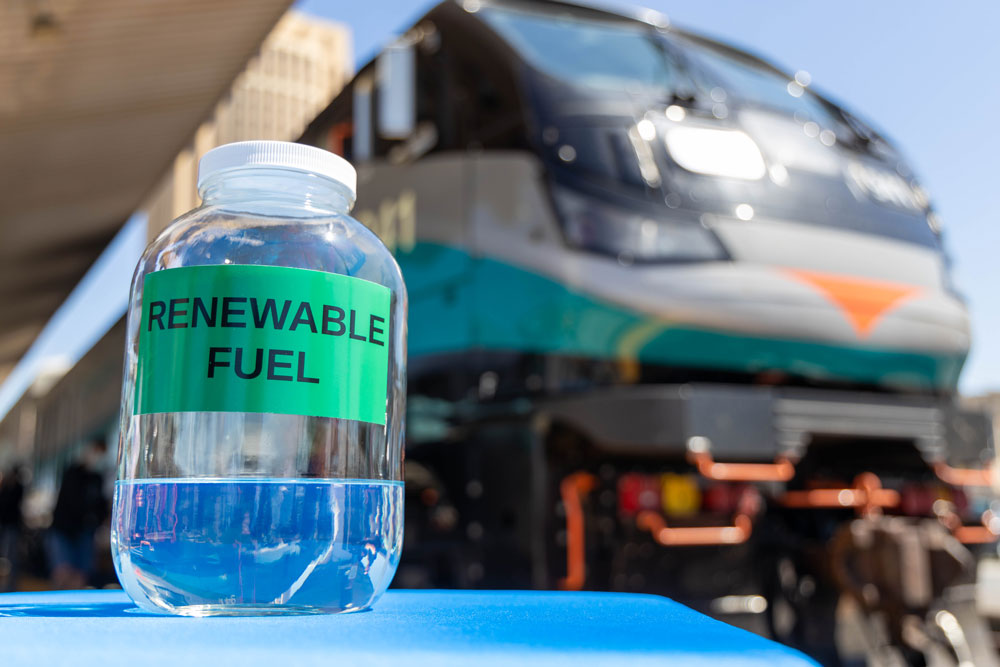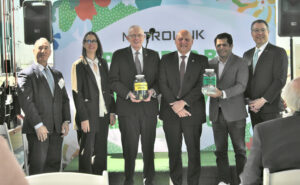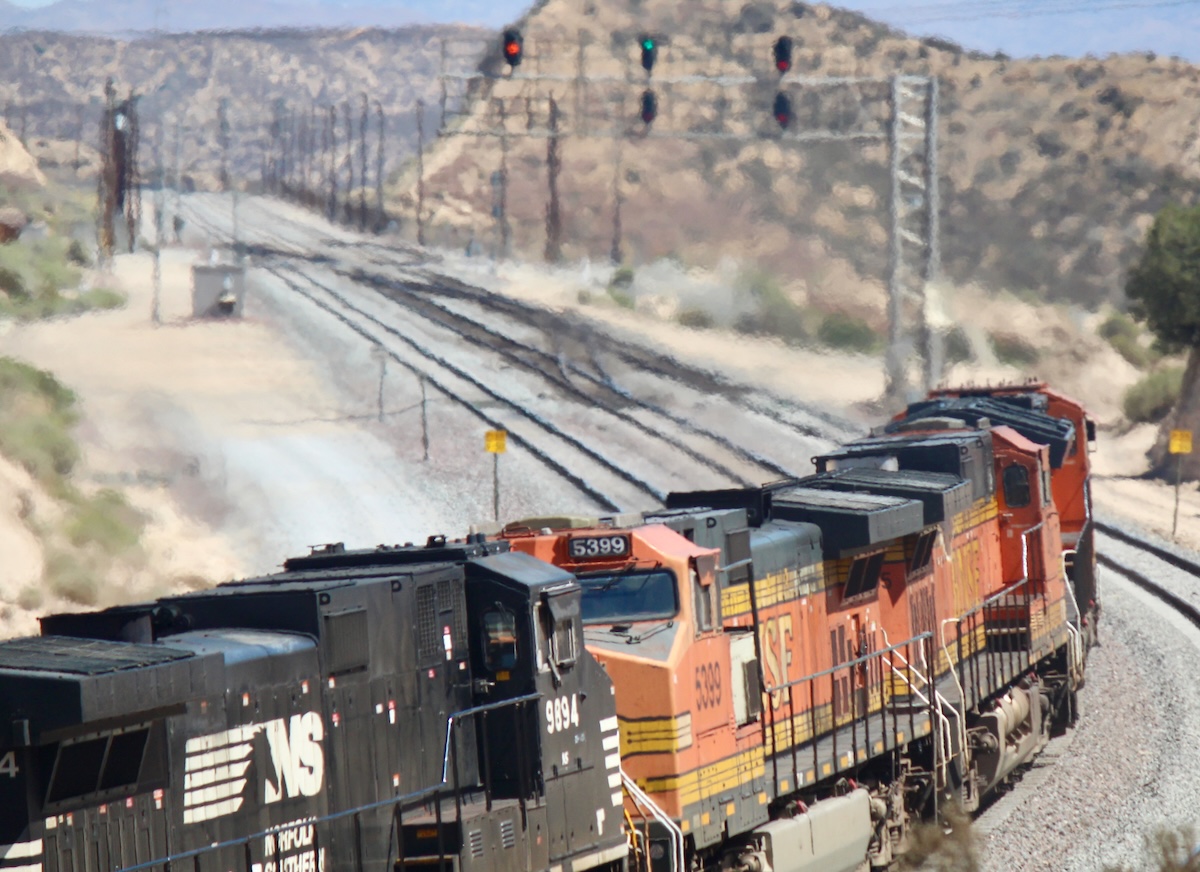

LOS ANGELES – Metrolink publicly shared its switch to renewable fuel, on April 13, 2022, making the agency the first in the nation to completely power all its locomotives by the cleaner burning alternative. The agency began using only renewable fuel in February.
“It’s a proud achievement to be the first rail agency in the nation to use renewable fuel to move people around Southern California,” Metrolink Board Chair Ara Najarian says. “We are committed to continue working toward better air quality in our region and lessening our effect on climate change for the planet.”
The renewable product is made of recycled natural fats and vegetable oils. It contains no petroleum fossil fuels and thus burns cleaner reducing harmful pollutants and decreasing greenhouse gas emissions of carbon dioxide by up to 80%.
“This transition by Metrolink to using renewable fuel will help further reduce the air pollutants from our locomotives and improve the air quality for all the communities along our 538 miles of track,” says Metrolink Board Vice Chair Larry McCallon, who is also a member of the South Coast Air Quality Management District’s Governing Board. “It is certainly the right thing that we needed to do for the health of our children and our quality of life.”
“Metrolink is committed to protecting the environment, embracing social responsibility and creating economic vitality for our region,” Metrolink CEO Darren Kettle says. “Our board-approved Climate Action Plan paved the way to this moment, and it is the first step toward our zero-emissions future.”
Metrolink is Southern California’s regional passenger rail service with 538 miles of track across Los Angeles, Orange, Riverside, San Bernardino and Ventura counties.














It’s interesting to me that almost no one knows that Herr Diesel actually built his new engine to burn on vegetable oil. Of course, heavy petroleum fuel was found in that day to be better. It’s interesting to see it all come full circle.
Still, we are burning “food” for transportation, rather than using the blessing of the concentrated energy available in another natural substance. I would be impressed if the Board Chairman said they were only burning “waste oils”. Are they truly using only spent oil and fat from french fryers? Or using virgin oils? What happens when price of non-biofuel decreases and biofuel increases? Is there a contingency? Finally, I believe Grand Canyon Railway switched to waste oil fuel months ago. But may be another road. Cheers, sort of……
So in my lifetime the aroma from a passing locomotive has gone from coal smoke to french fries. Is this a great country, or what?
GEORGE – If you eat the McDonalds french fries you could self-identify as a locomotive. Or smell like one.
Thanks for the belly laugh Charles!!!
I’m in favor of cutting carbon dioxide emissions to zero, because then all the trees will die.
So will the crops you eat and the crops that feed the animals you eat.
They didn’t seem to have any troubles before the internal combustion engine.
Sorry to see so few people understand humor and irony today.
The third paragraph is a non-sequitur. Non-petroleum means cleaner burning? Maybe but I’m not convinced.
Refardless of the source of the carbon, combining carbon and oxygen produces heat and CO2.
I believe to general idea behind bio-fuels such as bio-diesel and bio-mass is that you are releasing the carbon back into the environment from which is was recently captured. Fossil fuels are bringing forward carbon that was captured from the atmosphere millions of years ago and releasing into our present atmosphere. I agree with others here that if the bio-fuel is largely recovered waste oils, than this application should have a net benefit.
The figure Metrolink gave us was that the renewable fuel they are currently using is about six cents less a gallon compared to the fossil fuels they were using.
Anything to keep people’s minds off the crisis degradation of Los Angeles
If you say so… From Wikipedia: “Up to 85 percent of “vegetable oils” are from soybeans, the most commonly used. The other seed oils are less common, like corn, sunflower, safflower and canola oil. A few are actually from fruit; this includes olive, coconut and palm oils.”
Now I believe a lot of fossil fuel is used in growing these products (plowing, harvesting, transporting to manufacturer, etc..).
Also, what is the cost per mile that Metrolink engine/cab car travels? Is it going to be more or less than fossil fuels?